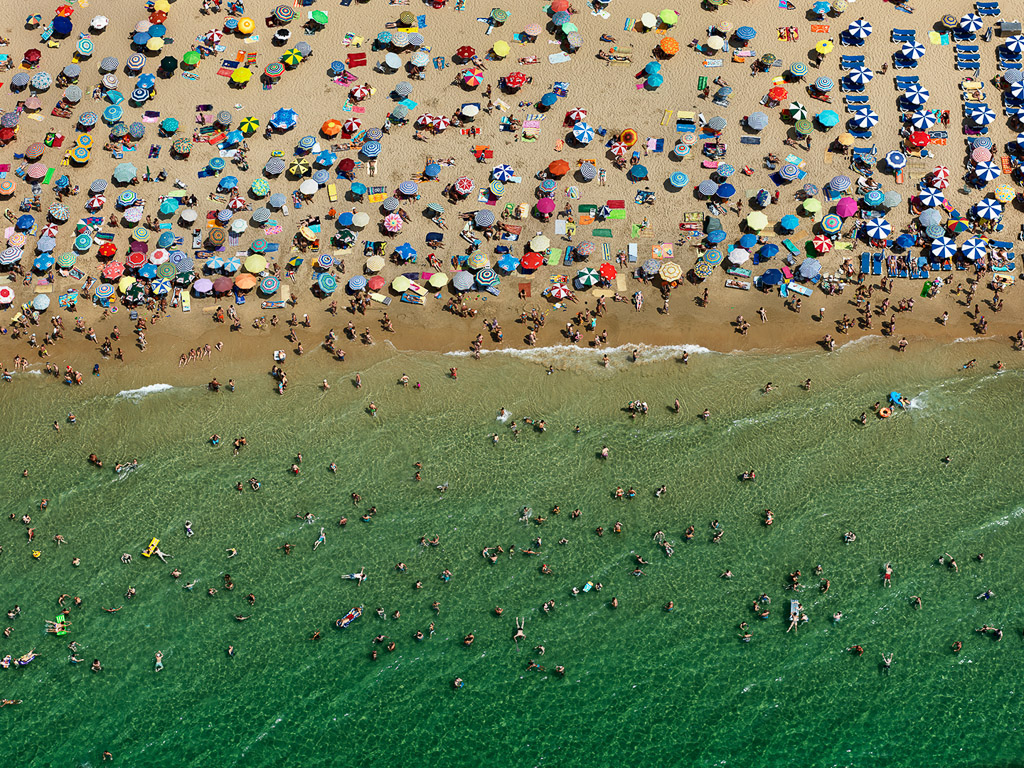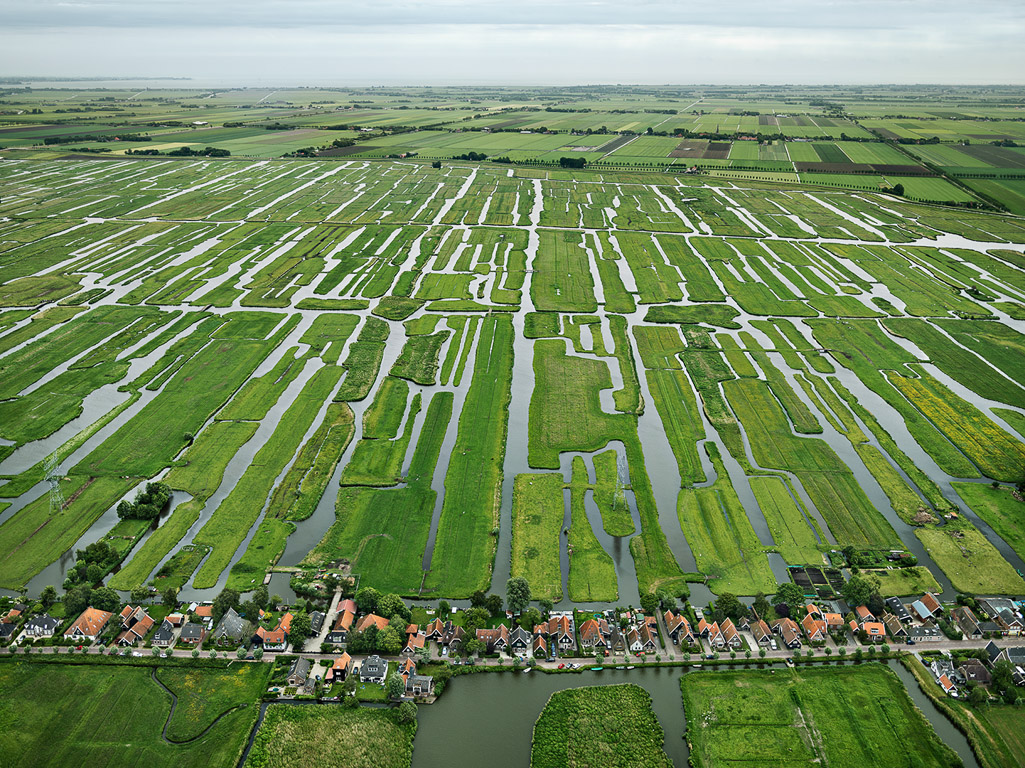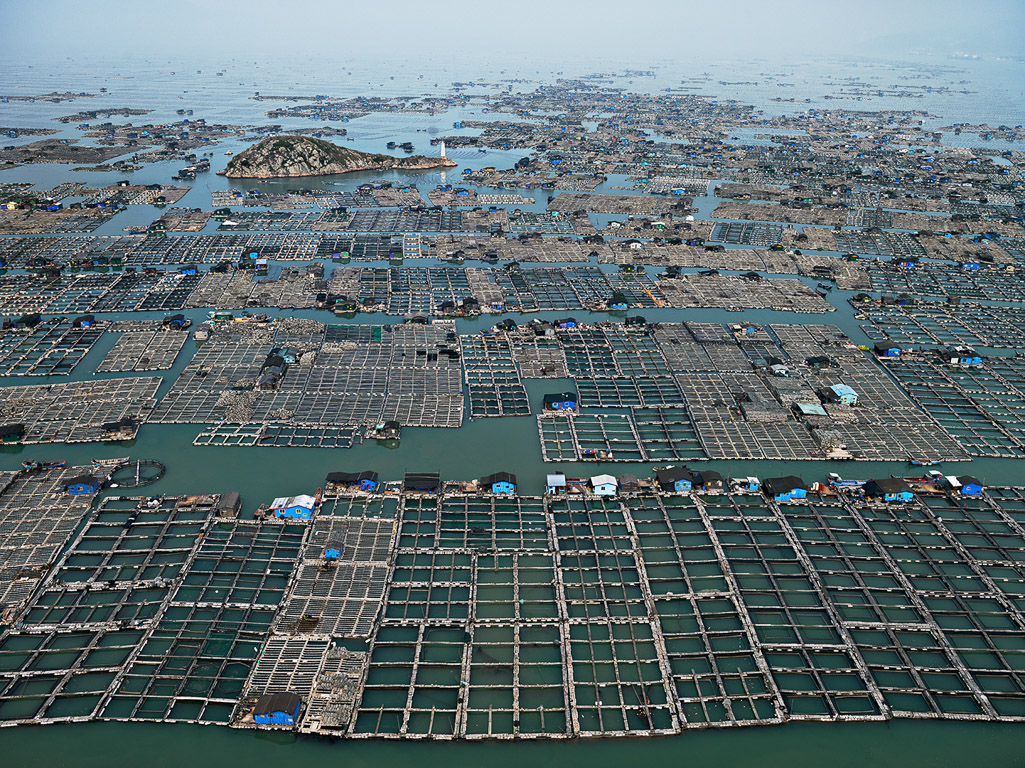Edward Burtynsky’s “Water” Project
September 2013 marked the launch of photographer Edward Burtynsky’s Water project. Encompassing a series of large-format photographs, a new film (Watermark), and his latest book, Water is a visually stunning multimedia exploration of humanity’s (often troubled) relationship with the eponymous life-giving substance.
Burtynsky is probably best known for his troublingly beautiful photographs of industrialized environments that inspired the 2006 documentary Manufactured Landscapes. That film followed the photographer through China as he produced haunting images of the country’s rapid industrialization.
This latest project takes a similar international approach and includes footage from 10 different countries as Burtynsky documents the awesomely complex and multifaceted nature of water on a planet dramatically reshaped by human lives and livelihoods. Much like his previous work on industrial landscapes, the focus here is on both aesthetics and ethics. Burtynsky hopes his art will inspire re-examination of what is simultaneously the most important and most taken-for-granted substance on the planet.
Here’s his artist’s statement:
While trying to accommodate the growing needs of an expanding, and very thirsty civilization, we are reshaping the Earth in colossal ways. In this new and powerful role over the planet, we are also capable of engineering our own demise. We have to learn to think more long-term about the consequences of what we are doing, while we are doing it. My hope is that these pictures will stimulate a process of thinking about something essential to our survival; something we often take for granted—until it’s gone.
I came across the Water project thanks to my friend Sigrid’s suggestion that I check out the photo series.

This aerial photograph of Louisiana’s coastal marshes immediately caught my eye. Part of his “Gulf of Mexico” sub-series focused on the BP oil spill of 2010, the image is especially close to my own research in the deltaic plain of the Mississippi RIver.
The straight line of open water you see cutting through green wetlands hides a submerged oil or gas pipeline. After almost a century of oil and gas development, Louisiana’s coastal wetlands are riddled with thousands of miles novel waterways just like this one. Widening each year thanks to erosion, these channels and transportation canals excavated by the oil and gas industry allow saltwater to penetrate deep into freshwater wetlands. These perforations of the coastline are eating southern Louisiana from the inside out, contributing significantly to shocking rates of land loss: 2,000 square miles of the state’s coastal wetlands have been converted to open water since 1932.

Now, compare the perforations of Louisiana’s coastline with Burtynsky’s aerial photograph of a Spanish beach. The fluid, permeable boundary between land and water is beautifully depicted through color, texture, and the ways beachgoers have arranged themselves across the landscape. As just one example of the multiple cultural values humans bring to water and coast areas, it brings to mind John Gillis’s fascinating look at what he calls “the human shore.”

This image of the Dutch countryside meanwhile, illustrates a very particular way of living with a watery landscape. For over 1,000 years, people in the Netherlands have been at work occupying former lakes and wetlands. By draining watery places and enclosing the resulting lowlands (or “polders”) with dykes, the Dutch in fact created a good portion of the Netherlands we see today. Complex networks of pumps (once powered by those famous Dutch windmills), sluices, canals, and dykes have helped maintain this beautiful, if troubled, mosaic of land and water.
More recently, the Dutch have been exploring programs to “de-polder” the countryside and intentionally re-invite water back into the landscape as a new, soft-infrastructure approach to flood mitigation.

Where the Dutch may have spent centuries sorting out the wet and the land from wetlands, in other parts of the world people find ways of inhabiting watery places in entirely different ways. We can increasingly find floating settlements clustered around all kinds of aquacultural waterscapes raising “crops” like fish, shellfish, seaweed, rice, or salt.
And just for kicks, compare both the Dutch polders and this photograph of Luoyan Bay in China with Burtynsky’s aerial photograph of VeronaWalk, a subdivision in Naples, Florida.

Finally, I found this photo especially thought-provoking. A line marks the apparently impermeable boundary between a Navajo reservation and a Phoenix suburb. The stark contrast suggests so much about the ways water is entangled not just with land-use or livelihoods, but also capitalism and inequality. The dense, well-irrigated, presumably wealthy (and perhaps mostly white?) suburb couldn’t look more different from the adjacent arid, undeveloped, and (seemingly) uninhabited indigenous landscape.
What else besides water fails to flow from right to left across that line? Wealth? Services? Investment? How do those shortages affect the Navajo and their reservation? And what about the flows from left to right? Are Navajo people welcome in that suburb? Would they even want to be? If yes to both questions, then does crossing that line afford real opportunities, or do they simply end up providing low-wage labor as nannies, cleaners, and gardeners? My speculations aside, this photo (along with the rest of Burtynsky’s series) asks that we consider just how complicated water and its flow—or lack thereof—can be.
Check out the rest of the series or learn more about the project as a whole. Burtynsky’s book is also available as an app through iTunes.

2 Comments
Join the discussion and tell us your opinion.
These pictures are wonderful. So is your blog, congratulations! I’m an architect and I’m in a Master of Landscape Design. My project is in a watery/porous place here near Rio de Janeiro, Brazil.
It was very useful to me, thank you!
[…] http://adammandelman.net/2013/10/08/water-burtynsky/ […]